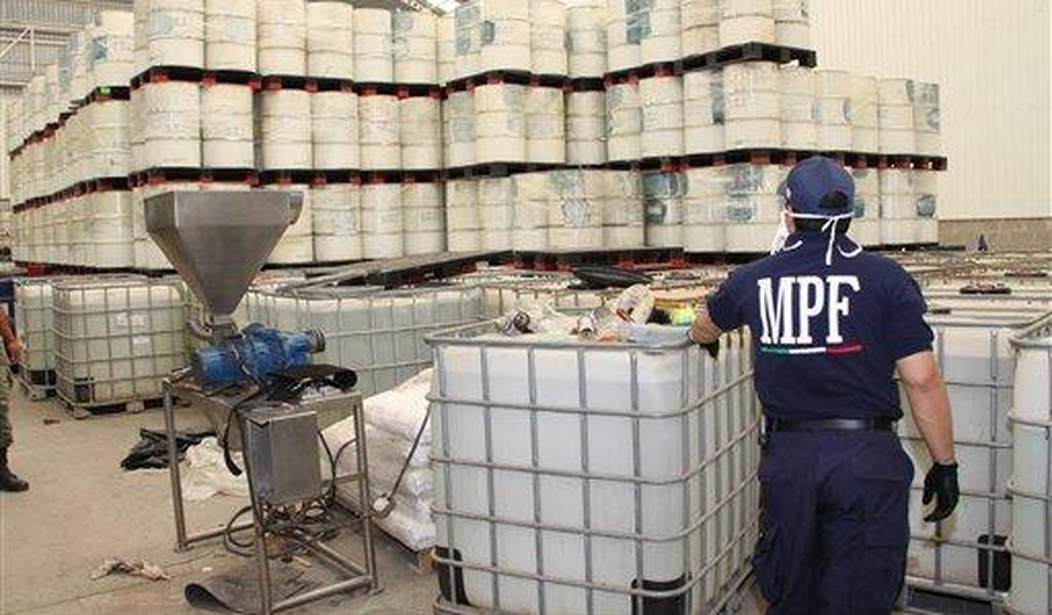An interesting story about the competing drugs that addicts are using, sometimes without even knowing it. People on the street and people close to being on the street often buy fentanyl because it’s cheaper than heroin. It puts people into s stupor but it’s also so potent that a miscalculation of the dosage can easily result in an overdose. This is why cops and firefighters in many big cities on the west coast now carry Narcan with them. It’s a way to quickly reverse the effect of the drug.
If fentanyl were the only drug going around the treatment for it would be relatively straightforward. There are substitute drugs that help eliminate cravings which people can be slowly weened off of over time. The real problem is that the vast majority of addicts now use multiple drugs all at once and, for some of them, there is no clear treatment.
Over the last three years, studies of people addicted to opioids (a population estimated to be in the millions) have consistently shown that between 70 and 80 percent also take other illicit substances, a shift that is stymieing treatment efforts and confounding state, local and federal policies…
The incursion of meth has been particularly problematic. Not only is there no approved medical treatment for meth addiction, but meth can also undercut the effectiveness of opioid addiction therapies. Meth explodes the pleasure receptors, but also induces paranoia and hallucinations, works like a slow acid on teeth and heart valves and can inflict long-lasting brain changes…
“Treating someone for opiates is relatively easy,” said Dr. Paul Trowbridge, the addiction medicine specialist at the Trinity Health Recovery Medicine clinic in Grand Rapids, an hour north of Kalamazoo…But meth, he said, “is a monster.”
I’ve written before about the new type of meth which some are calling “super meth.” This has been produced by cartels in Mexico in industrial quantities, literally hundreds of tons of it. And because of how it’s made the damage it does to addicts is severe.
The symptoms were always similar: violent paranoia, hallucinations, conspiracy theories, isolation, massive memory loss, jumbled speech. Methamphetamine is a neurotoxin—it damages the brain no matter how it is derived. But P2P meth seems to create a higher order of cerebral catastrophe. “I don’t know that I would even call it meth anymore,” Ken Vick, the director of a drug-treatment center in Kansas City, Missouri, told me. Schizophrenia and bipolar disorder are afflictions that begin in the young. Now people in their 30s and 40s with no prior history of mental illness seemed to be going mad.
The use of this new meth is still spreading and making it much harder to help addicts who are often displaying behavior similar to schizophrenia.
People addicted to multiple substances are far more resistant to going into treatment than single-substance users, addiction medicine experts say.
Dr. Trowbridge said some opioid patients can become stable enough to progress to monthly injectable buprenorphine. But if they are also using meth, that treatment plan often collapses.
The paranoia and hallucinations caused by meth disorient them, he said. One patient threw himself in a river to escape nonexistent people who were chasing him. Others insisted that dumpsters were talking to them, that color-coded cars were sending them messages.
So they skip appointments, returning only “when they start to hit withdrawal and realize their opioid injection is wearing off,” he said.
The story ends with a focus on the “harm reductions” efforts of one group who wheel a wagon full of drug paraphernalia into the woods to hand out to the addicts. This includes things like meth pipes (on the grounds that sharing pipes is dangerous). But you have to wonder if these folks are really helping or are just making it easier for these people to self-destruct. The author of the story doesn’t ask but some of the commenters did.
The end of the article reaches the most important point. “Harm reduction” models enable drug use, addiction, violent behavior and psychosis. No one who uses such a vast array of drugs can be a productive member of society-hold a job, have a a place to call their own or be a good partner or parent. Handing out clean needles and glass pipes to people who are in a death cycle of destruction and despair, while helping them evade the police is not medicine. It is madness.
One person admits to feeling a bit of compassion fatigue for people who don’t seem able to help themselves.
I have such mixed feelings when I read these articles. Part of me feels a sense of responsibility to help those in such need, but lately I have started to feel tired. I am tired that no matter how much help they are offered they dont want to help themselves. How much time time, money and resources can we continue to spend on people that dont want to help themselves. This does feed a sense of resentment in the people who do everything right and are told to help those that dont want to help themselves. Where is there personal responsibility in all of this.
And a more personal take:
I have a family member ( nephew and his wife) who are addicted just like the people in this article-it has ruined our family.
My sister and others around them pay their rent and give them money
They lost custody of their children (thank God)They live in this house that is rent free for them and it is in squalor
Nothing seems to help them – if you are around them you have to hold your wallet close because they will steal from you in a heartbeat
We used to gather for holidays and have a great time. That is all gone now.My sister has ruined her life trying to help them and it simply isn’t working.
And one last point about harm reduction:
The problem with harm reduction is that it only focuses on the user, not the public. The public is still exposed to significant harm from drug abusers.
The needs of drug addicts are seemingly endless and the willingness of everyone else to tolerate and support them is not endless. At some point we need to come up with a better plan than allowing addicts to pursue their addictions in public until they die.







Join the conversation as a VIP Member